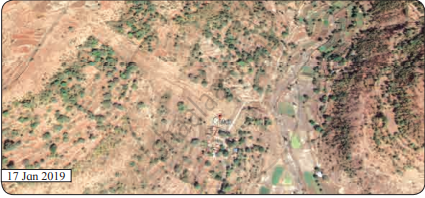Advertisements
Advertisements
Question
See the diagram and answer the following questions:

- Which rock layer has experienced the most weathering?
- Which rock layer has experienced the least weathering?
- What could be the reason behind the difference in weathering?
Solution
- Rock layer C has experienced the most weathering.
- Rock layer B has experienced the least weathering.
- Rock C has a lot of fractures and joints so it got weathered easily. Rock B might have been a hard rock, more resistant, so the weathering process is slow.
APPEARS IN
RELATED QUESTIONS
Identify the correct correlation:
A: Assertion; R: Reasoning
A: In areas of high rainfall, slides are very common.
R: Types of mass wasting movements are dependent on a region's climate.
Identify the correct correlation:
A: Assertion; R: Reasoning
A: Freeze and thaw weathering is common in desert areas.
R: Water gets into cracks and breaks the rocks.
Draw a neat and labelled diagram of Freeze and thaw weathering
Draw a neat and labelled diagram of Block disintegration.
Answer in detail:
Explain with examples the process of weathering happening in Konkan.
Besides climatic factors, rock type, and structure, can you think of some more factors that affect weathering?
Can animals and plants also influence weathering? Will that be physical or chemical weathering? Which type of weathering does stone quarrying cause?
The satellite images are given in figure A and B belong to the same location but a different timeline. Study the images and answer the following questions.

Figure A

Figure B
- Compare the images and tell what differences do you find in these images.
- In 2019 what does the patch of land going from north-west to south-east signify? Why was it not there in the 2011 image?
- To what extent is the climate of the place responsible for this disaster?
- Which other factors are responsible for the disaster?
Study the following schematic diagram. It shows the relationship between the speed of material and moisture content. Read the index, and answer the following questions:

- Fast
- Slow
- Dry
- Wet
- Creep
- Slide
- Fall
- Flow
Question:
- What will happen when the weather conditions are dry?
- When will a flow occur?
- When will a creep occur?
- Now can you enumerate the factors which affect mass wasting?
Think of the reason why landslides should be more frequent in the foothill zone of the Himalayas and Western Ghat region. Why do landslides not occur in Marathwada in Maharashtra or the Maidan area in Karnataka?
